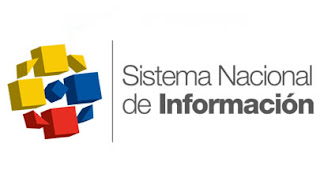VENTAJAS CON LA APLICACIÓN DE AGRICULTURA DE PRECISIÓN
Con la aplicación de agricultura
de precisión, se pueden esperar muchos resultados. Por ejemplo, se
incrementaría la eficiencia en la aplicación de insumos agrícolas, al conocer
exactamente el sitio en que deben aplicarse. De esta forma, se logra un menor
desperdicio de productos fertilizantes y plaguicidas y, como resultado de ello,
una menor contaminación de los recursos naturales.
Al respecto, autores como
Bongiovanni y Lowenberg-Deboer (2004), señalan que la agricultura de precisión puede
contribuir de muchas formas a logran una producción agrícola sustentable a largo
plazo al reducir la carga medioambiental de insumos agrícolas al colocar el
tratamiento necesario, únicamente en la cantidad necesaria y en el momento oportuno.
Como efecto indirecto de la
aplicación de agricultura de precisión, puede esperarse una reducción en el
desarrollo de resistencia en plagas y enfermedades, derivado de una menor
cantidad de plaguicidas aplicados con este sistema.
De igual forma, otro resultado es
la menor necesidad de mano de obra agrícola, pues al implementarse un sistema
de agricultura de precisión, la mayor parte de las labores estarían mecanizadas
y no se requeriría de la intervención de mano de obra, haciendo el trabajo
menos cansado. Desde el punto de vista de los grandes productores, este sería
un resultado positivo, por el ahorro que implica, pero desde el punto de vista
de los trabajadores agrícolas, esto podría ser un resultado negativo que les
restaría fuentes de trabajo.
Aspectos económicos
que derivan de la aplicación de Agricultura de Precisión
Si bien la implementación de la
tecnología y equipos necesarios dentro de la agricultura de precisión supone un
desembolso alto de dinero inicialmente, una vez implementado el sistema,
existirá una reducción de la inversión en insumos pues existe una mayor
eficiencia en el uso de éstos insumos (como por ejemplo semilla, fertilizantes,
plaguicidas, combustible de la maquinaria agrícola, entre otros), permitiendo
un ahorro en cada aplicación.
Como evidencia de esto, puede
citarse un estudio de adopción de tecnología de agricultura de precisión y
manejo de riesgo (Gandonou, 2005), en el que se obtuvo una mayor tasa interna
de retorno con agricultura de precisión (268,898 USD), frente a la agricultura
convencional (244,829 USD). Otros autores como Robertson et al (2007), han determinado que, en un estudio de cuantificación
económica de la aplicación de agricultura de precisión, los beneficios se
debieron a la eliminación en un 10% de la sobreposición durante las aspersiones
de plaguicidas con la agricultura de precisión. Los mismos autores señalan que
se produjo un ahorro al realizar la cosecha de una manera más eficiente.
De igual forma, el incremento de
rendimientos, así como calidad de los productos, como resultado de aplicar la
Agricultura de Precisión, implica un incremento en los ingresos, mismos que
compensan la inversión inicial en tecnología y equipos.
Incidencias de la aplicación de Agricultura de Precisión en el
replanteamiento de una política agraria
En el
replanteamiento de una política agraria, la agricultura de precisión tendría
incidencias relacionadas con el fortalecimiento de un sistema agrícola basado
en la aplicación de tecnología, que permita garantizar la seguridad alimentaria
mediante un incremento de la productividad y, e igual forma, el uso eficiente
de los recursos, en un ambiente que cada vez es más demandante de alimento y
materias primas.
El replanteamiento de esta
política debe tomar en cuenta un fuerte componente de capacitación enfocado
tanto a nivel de productores a gran escala como a pequeños productores, pues
los sistemas agrícolas altamente tecnificados son aún escasos en el Ecuador y,
para implementar agricultura de precisión, es necesario empezar por la
capacitación para garantizar éxito en la adopción de nuevas tecnologías, así
como en su ejecución a mediano y largo plazo.
Por otro lado, considero, como un
criterio muy personal, que el replanteamiento de esta política debe ser
estudiado muy detalladamente en el contexto propio del Ecuador. Esto con el fin
de que su implementación, no genere riesgo para los productores más pequeños
que realizan agricultura familiar y campesina, cuyos excedentes se
comercializan en mercados locales. La intención debe ser buscar los mecanismos
más apropiados para evitar que este tipo de productores (que en el Ecuador son
la mayoría), no se vean afectados competitivamente en el mercado.
Al respecto, el Joint Research Centre de la Comisión
Europea (2014), plantea que existen algunos retos en la adopción de tecnologías
de agricultura de precisión por parte de pequeños y medianos productores, para
lo cual plantea las siguientes estrategias:
a)
Capacitación adecuada y asistencia durante la
implementación.
b)
Estudios que permitan identificar las regiones y
tipos de productores más apropiados para realizar mediciones en la aplicación
de agricultura de precisión.
c)
Proyectos de investigación y desarrollo.
d)
Un sistema de seguimiento y asistencia constante
para los productores.
Finalmente, considero que es
importante que se busquen estrategias que eviten la alta dependencia de
tecnología importada, que se incrementaría con la implementación de un sistema
de agricultura de precisión, pues el Ecuador no es productor de maquinaria
agrícola, así como la gran mayoría de plaguicidas y fertilizantes agrícolas.
REFERENCIAS
Bongiovanni, R. y Lowenberg-Deboer,
J. 2004. Precision Agriculture and Sustainability. Kluwer Academic Publishers.
Holanda. pp. 360 – 384.
Gandonou, Jean-Marc.
2005. Precision Agriculture Technology Adoption and Risk Management. University
of Kentucky. Estados Unidos. pp. 25 – 35.
Joint Research Centre.
2014. Precision Agriculture: An opportunity for EU farmers – Potential Support
with the CAP 2014 – 2020. European Comission. pp. 9 – 13.
Robertson, M.,
Carberry, P., Brennan, L. 2007. The Economic Benefits of Precision Agriculture:
case studies from Australian grain farmers. Grains Research Development
Corporation. pp. 34 – 44.






















